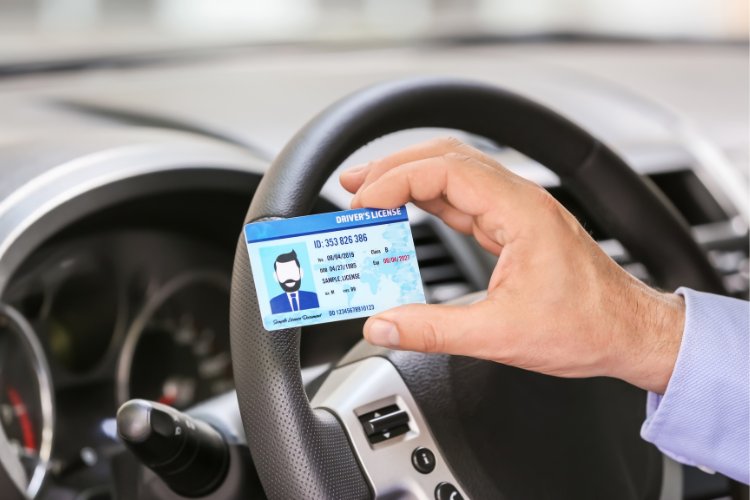Last Updated on May 16, 2025 by Maryam Siddiqui
Thinking about driving your car under the Spanish sun? You’re not alone! Both expats and tourists wrestle with the question of whether to Import A Car To Spain rather than buy one locally. And it’s all for good reason.
Having your own set of wheels means total freedom to explore Spain’s charming villages, scenic coastlines, and hidden gems at your own pace. No waiting on buses or navigating unfamiliar rental terms.
But hold up, it’s not all smooth roads. Importing a car can come with paperwork, fees, and a few hoops to jump through. So, is it really worth the effort?
Let’s break down everything that goes into importing a car to Spain, plus a few things you might not expect. This should help you decide if bringing your own car is the right move.

What You Should Know Before Importing a Car to Spain
Before you even think about shipping your car over, take a step back and do your research. Seriously, it’ll save you a ton of stress later. To import a car to Spain means navigating some classic Spanish bureaucracy, and yep, that can be a bit of a maze.
One thing that often catches people off guard: if you’re a resident in Spain, you legally can’t drive a car with foreign plates. If you’re just visiting or still a non-resident, you’re in the clear, but for a while.
Spain’s public transport is pretty solid, especially in bigger cities. So, depending on where you live, you might not even need a car. Nonetheless, if you’re set on that road trip lifestyle or living somewhere more remote, having a car might be mandatory for you!
Car Prices In Spain
Car prices in Spain can vary a lot depending on the make, model, year, and whether the car is brand new or used. For example, a new Volkswagen Golf 1.4 Trendline costs around €36,000, while a Toyota Corolla Sedan 1.6 starts at about €27,000, via Numbeo.
But that’s just the starting price, if you plan to import a car, things get a bit more complex. First off, import duties vary depending on where the car is coming from. If you’re importing from an EU member state, you generally won’t pay customs duty, though registration tax (IEDMT) and VAT (IVA) still apply.
If you’re bringing in a car from a non-EU country, expect to pay customs duty plus VAT, on top of registration fees. You’ll also need to factor in ITV inspection, insurance, and possibly modifications to meet Spanish road standards.
Convenience
Importing a car to Spain can be pretty convenient, especially if you’re coming from nearby countries like France or Portugal. In fact, it might even be easier than buying a new one here.
But if you’re relocating from farther away, like the UK or the U.S, extra costs and long shipping times can make things trickier.
Some people prefer to drive their car over to avoid selling it back home, while others find shipping by sea more practical. In the end, it’s all about what fits your budget, timeline, and lifestyle best.
Importing Cars May Be Very Expensive
As mentioned, importing a car to Spain can be expensive, especially if you’re bringing it in from a non-EU country. In addition to the usual shipping and logistics costs, there are a few major taxes to budget for.
These include import duty, VAT (IVA), and registration tax (IEDMT). Each one has its own rules and calculations, and together, they can seriously deplete your budget.
So before committing, make sure you’ve got a clear picture of all the potential charges. We’ll break down these taxes in more detail a little later on.
Other Car Expenses
By now, you’re probably wondering if it’s really worth it to import a car to Spain—and honestly, that’s a fair question. Beyond the big-ticket costs like import tax and VAT, there are several ongoing expenses to keep in mind.
First, there’s the road levy (Impuesto sobre Vehículos de Tracción Mecánica), an annual tax that varies by region and vehicle type.
Then you’ve got registration costs, which include getting Spanish plates, technical inspections (ITV), and paperwork fees.
Insurance is another cost; prices depend on your car, driving history, and where you live. And let’s not forget costs for modifications if your vehicle doesn’t meet Spanish standards. These extras can sneak up fast, so it’s a good idea to add them to your budget early on.

Car Tax to Import a Car to Spain
Let’s talk about car taxes because if you’re planning to import a car to Spain, you’ll want to know exactly what you’re signing up for.
- First up is the Import Duty, called IPSI (Impuesto sobre la Producción, Servicios e Importación). If you’re bringing your car in from outside the EU, you’ll pay 10% of the car’s value, based on its original market price minus depreciation.
- Next is VAT, known locally as IVA (Impuesto sobre el Valor Añadido). This sits at 20% and is calculated on the car’s customs value plus the import duty, so it adds up quickly.
- Then there’s the Registration Tax (IEDMT). This is paid when the car is registered in Spain, and it depends on CO₂ emissions and market value. The higher the emissions, the more you’ll pay, anywhere from 0% to over 14.75%.
These taxes alone can heavily impact your budget, so it’s key to plan accordingly.
Requirements When Importing a Car to Spain
If you’re ready to tackle the challenge of importing your car to Spain yourself, there’s a clear process you’ll need to follow.
First off, your car can make its way to Spain by road, ship, or even plane, depending on where you’re coming from. Either way, it’s best to get in touch with a company that specializes in vehicle transport early on.
Once your car arrives in Spain, the paperwork begins. You’ll need a copy of the purchase invoice or contract, details, and ID copies from both the seller and yourself, and the European Certificate of Conformity (C.O.C).
If your car doesn’t have a C.O.C., you’ll need to start the unified approval process instead. Then come the tax declarations, proof of any customs and VAT payments, and a special tax tied to your car’s make and model.
- Proof of purchase: either the original invoice or a signed sales contract
- A copy of the seller’s ID along with their contact information
- A copy of your own ID and contact details
- The car’s European Certificate of Conformity (C.O.C)
- If there’s no C.O.C., you’ll need to go through the unified approval process
- Completed tax forms related to importing the vehicle into Spain
- Documentation showing payment of customs duties and VAT
- Receipt of the special tax paid based on your vehicle’s make and model
Importing A Car to Spain from the EU
If you’re bringing a car into Spain from another EU or EFTA country, the process is a lot smoother than importing from outside the EU.
You won’t need to pay import duty (IPSI), which is a big relief. VAT only kicks in if the car is considered new. This means the car is less than six months old or has under 6,000 km on the clock.
Also, if you’ve already paid VAT in the country where you bought the car, you might be able to reclaim it. Of Course, this is if you have all the proper documents in order.
These little technicalities can make a big financial difference, especially when deciding whether to import or buy locally in Spain. So if you’re planning to bring in your vehicle, make sure you’re clear on what qualifies as “new” under Spanish tax law.
Let’s Move to Europe
With Viv Europe your plans for Europe will come to a reality
Importing A Car to Spain from Outside The EU
Importing a car to Spain from outside the EU can definitely feel like a challenge. But it’s not impossible to handle on your own if you’re up for the task.
As we mentioned earlier, you’ll need to pay several taxes, including import duty (IPSI), VAT (IVA), and the registration tax (IEDMT).
VAT is where things can get a little tricky. If you’re already living in the EU and bought the car abroad, it’s treated like any other import, meaning you’ll have to pay IVA.
But if you’re moving to Spain and bringing the car with you as part of your personal belongings, then you may be exempt from VAT. It doesn’t matter if the car is new or used—the situation depends on your residency status.
If this sounds like a lot, don’t worry, we’ve broken everything down. Keep reading for a step-by-step guide to import a car to Spain.
Step-By-Step Guide to Import Your Car to Spain
1. Gather Your Paperwork
Start by pulling together the essentials:
- Proof of ownership (like the original title)
- Certificate of Conformity (COC)
- Bill of sale (shows the car’s value)
- Passport or NIE (Spanish tax ID)
- Export certificate (for non-EU cars)
2. Sign Up on Spain’s Tax Portal
3. Make Sure You Have the COC
- This shows your car meets EU standards..
4. Fill Out the Customs Form (DUA)
5. Pay the Taxes
- Non-EU: 10% customs duty + 21% VAT (IVA)
- EU: VAT only if the car is brand new
6. Book Your ITV Inspection
You will need to provide the following documents for the inspection
- COC
- DUA receipt
- Proof of ownership
7. Pay the Registration Tax (IEDMT)
- This CO₂-based tax ranges from 0% to 14.75%. Pay it through the Agencia Tributaria site.
8. Get Your Circulation Papers
- Once you pass the ITV and pay all taxes, you’ll receive:
- ITV certificate
- Car registration doc
9. Register with the Traffic Office
- Hand everything over
- Pay the final registration fee
- Get your new Spanish plates
10. Insure Your Vehicle
- Before hitting the road, get third-party liability insurance
Finally, just make sure to complete the full import and registration process within 30 days of the car’s arrival in Spain. Not quite ready to tackle it all at once? No problem. You can request a temporary number plate, which gives you 60 days to sort everything out while staying fully legal on the road.
How To Exchange My Valid Driver’s License for A Spanish License?
Swapping your driver’s license for a Spanish one? Good news, this is usually the least stressful part of settling in, depending on where you’re from.
Spain has agreements with several countries that allow you to exchange your license without taking a driving test. To see if your country is on that list, check out the official site here.

If your country isn’t on the list, don’t worry, you can still get a Spanish license, but you’ll need to take the driving test. Spain gives you up to six months to legally drive with your original license while you sort things out.
To be eligible, you must be at least 18 years old, have Spanish residency, and not be legally banned from driving.
If you meet the requirements, it’s time to book an appointment at your local DGT office (Dirección General de Tráfico). Just head to the website, fill in your details to grab a spot.
Here’s what you’ll need to bring to your appointment:
- Completed DGT application form
- Confirmation email from your DGT appointment
- Valid passport and TIE (bring photocopies of both sides)
- Your Padrón certificate
- Your valid driving license plus a photocopy
- A verification code (get this less than 24 hours before your appointment):
- A valid medical certificate (Psicotécnico), book this ahead of time
- A passport photo (color, 32×26 mm, plain background)
- The registration fee is payable by card or with proof of online payment (no cash accepted)
Once you’ve got everything sorted and attended your appointment, your shiny new Spanish license should arrive in the mail in about 4–6 weeks.
Should I Import My Car to Spain or Buy a New Car?
At the end of the day, the choice is totally yours. Just keep in mind that to import a car to Spain can get pretty pricey. So, if you’re thinking about bringing your car over, it’s worth comparing the cost of importing versus just buying a new (or used) car once you’re here. Strictly financially, importing a car to Spain will be heavier on your pockets compared to the alternative.
That said, plenty of folks still bring their cars over. It’s not always about the money. Maybe it’s a car you’ve had forever or one that just feels like home, and hey, that’s completely valid. Because the process of importing a car can be quite a task for most expats, seeking professional help is important.
Be sure to book a consultation for expert advice on car imports or any matter concerning immigration. If you’re not sure what to do, it’s a good idea to chat with other expats who’ve already been through the process. Here is our Facebook Group – All About Spain For Expats. You’ll probably find someone who’s been in your shoes and can give some honest advice.
And remember, you don’t have to figure everything out alone. Ask around, do your research, and take it one step at a time. Importing your car might not be the cheapest option, but if it makes you feel more at home, it might just be worth it.





